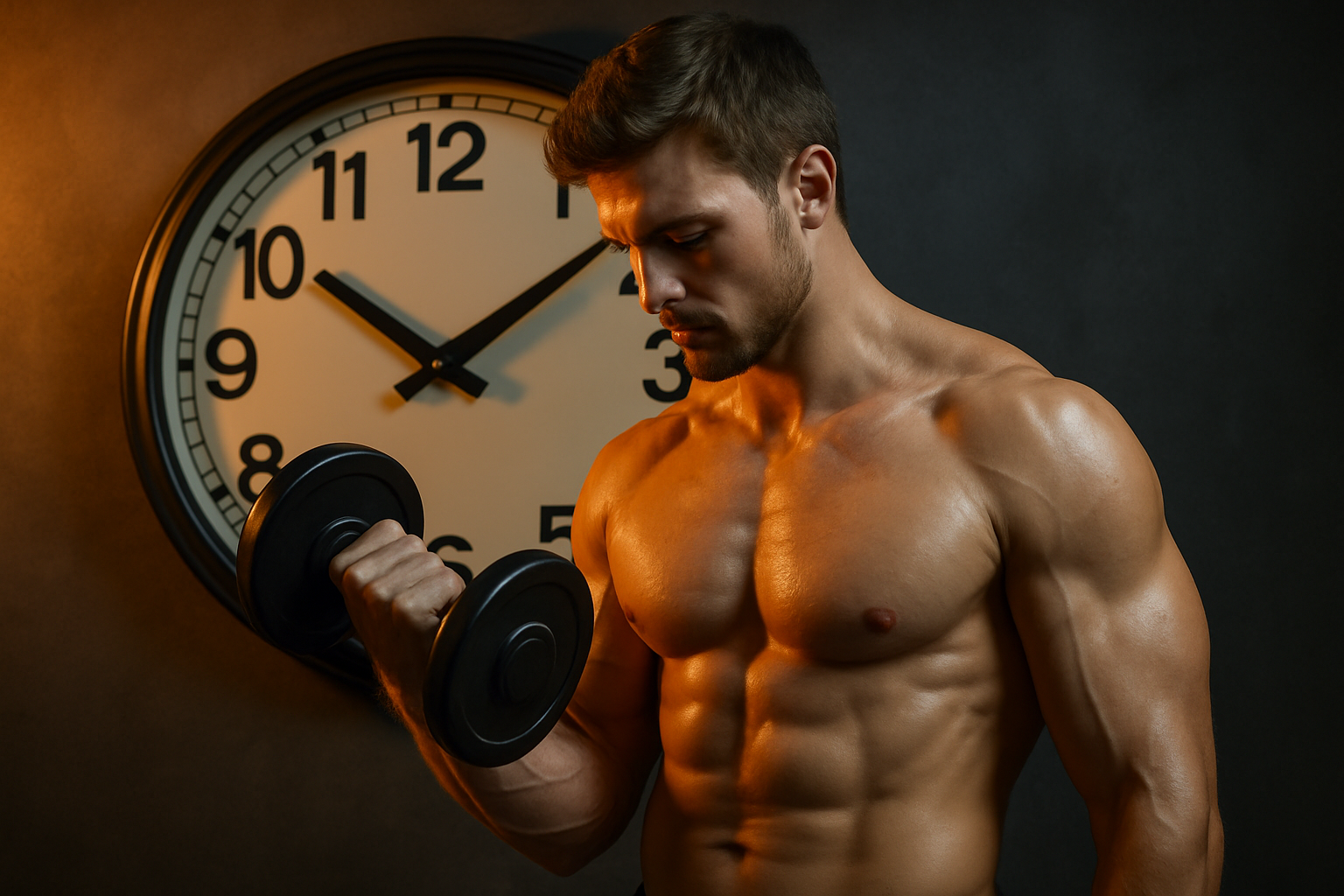Chrono-Exercise: Timing Your Workouts for Optimal Health
In a world where we're constantly seeking ways to optimize our health and fitness routines, a revolutionary concept is emerging: chrono-exercise. But what if the timing of your workouts could be just as crucial as the exercises themselves? This intriguing approach to fitness challenges us to rethink when we exercise, not just how we exercise. Could the clock be the key to unlocking our body's full potential?

The Science Behind Chrono-Exercise
At the heart of chrono-exercise lies the complex interplay between our circadian rhythms and physical performance. Circadian rhythms, often referred to as our body’s internal clock, regulate various physiological processes including hormone production, body temperature, and metabolism. These 24-hour cycles are influenced by external cues such as light exposure and eating patterns, but they also have a profound impact on our athletic performance and recovery.
Research has shown that certain aspects of physical performance tend to peak at specific times of the day. For instance, muscle strength and flexibility often reach their zenith in the late afternoon, while endurance activities may be more effective in the morning. Understanding these patterns can help individuals tailor their workout routines to align with their body’s natural rhythms, potentially leading to improved performance and better overall results.
Morning vs. Evening Workouts: Timing Matters
The debate between morning and evening workouts has long been a topic of discussion in the fitness community. However, chrono-exercise adds a new dimension to this conversation by considering the body’s physiological state at different times of the day.
Morning workouts, particularly those performed on an empty stomach, have been associated with increased fat burning. This is partly due to lower insulin levels and higher cortisol levels in the morning, which can facilitate fat mobilization. Additionally, morning exercise has been linked to improved mood and increased energy levels throughout the day.
Evening workouts, on the other hand, may be more beneficial for building strength and muscle mass. Body temperature and muscle flexibility tend to peak in the late afternoon and early evening, potentially reducing the risk of injury and allowing for more intense workouts. Furthermore, the body’s anabolic processes are more active in the evening, which could enhance muscle recovery and growth.
Optimizing Your Workout Timing
To fully harness the benefits of chrono-exercise, it’s essential to consider your individual circadian rhythm and lifestyle factors. While general guidelines can be helpful, the optimal workout time may vary from person to person. Here are some strategies to help you determine the best timing for your exercise routine:
-
Pay attention to your energy levels throughout the day
-
Consider your work schedule and daily commitments
-
Experiment with different workout times and track your performance
-
Be consistent with your chosen workout time to allow your body to adapt
Remember, the best workout time is one that you can stick to consistently. While chrono-exercise principles can optimize your results, consistency remains key in any fitness regimen.
Chrono-Exercise and Sleep Quality
One of the most intriguing aspects of chrono-exercise is its potential impact on sleep quality. Exercise timing can significantly influence our sleep-wake cycle, and finding the right balance is crucial for overall health and fitness gains.
Evening workouts, while beneficial in many ways, can sometimes interfere with sleep if performed too close to bedtime. The increase in body temperature and the release of endorphins can make it difficult for some individuals to wind down. However, moderate-intensity exercise performed 1-2 hours before bed may actually improve sleep quality for some people.
Morning workouts, particularly those performed outdoors, can help regulate the sleep-wake cycle by exposing the body to natural light early in the day. This can lead to improved sleep quality and more consistent sleep patterns over time.
Personalizing Your Chrono-Exercise Plan
While the principles of chrono-exercise provide a solid foundation, it’s important to remember that everyone’s body is unique. Factors such as age, gender, fitness level, and even genetic predisposition can influence how an individual responds to exercise at different times of the day.
To create a personalized chrono-exercise plan, consider the following:
-
Your chronotype (whether you’re naturally a morning person or a night owl)
-
Your fitness goals (fat loss, muscle gain, endurance, etc.)
-
Any health conditions or medications that may affect your circadian rhythm
-
Your work and social commitments
By taking these factors into account and gradually adjusting your workout timing, you can develop a chrono-exercise routine that works best for your body and lifestyle.
Chrono-Exercise Tips for Optimal Results
-
Maintain a consistent sleep schedule to support your body’s natural rhythms
-
Gradually shift your workout times to allow your body to adapt
-
Use light exposure strategically to reinforce your desired sleep-wake cycle
-
Consider splitting your workouts (e.g., cardio in the morning, strength training in the evening)
-
Stay hydrated throughout the day to support your body’s natural processes
-
Listen to your body and adjust your routine as needed
As we continue to unravel the complexities of human physiology, chrono-exercise stands out as a promising approach to optimizing our fitness routines. By aligning our workouts with our body’s natural rhythms, we may be able to unlock new levels of performance and well-being. While more research is needed to fully understand the long-term impacts of this approach, the principles of chrono-exercise offer an exciting new perspective on how we can make the most of our time in the gym. Remember, the key to success lies not just in what we do, but when we do it.





